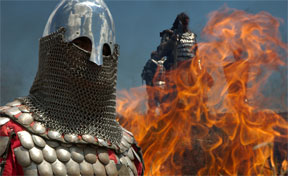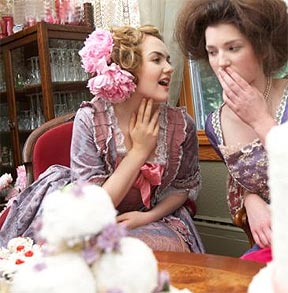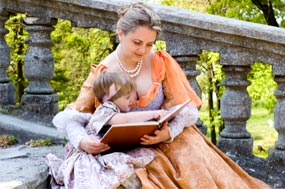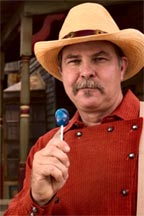writer in my critique group had an idea for a historical fiction novel, but she just couldn’t get started. “I’ve been researching for two years,” she said. “I have no idea where to start my story.” Her characters were stuck inside her notebooks full of research, although they were fighting to get out and tell their stories. If you’re an historical fiction writer, you might have had this same problem. Maybe you’ve found modern day ideas and dialogue sneaking into your text. You might be worried about the one reader who is waiting to find something in your book that’s not quite authentic and tell the world. As an historical fiction writer, you must face these challenges when creating stories for your readers.
My middle-grade, historical fiction novel titled, Finding My Place, is under contract with White Mane Kids, but the road to publication was not easy. After months of research and years of rewrites, critique group meetings, and feedback from agents and editors, I finally got an acceptance. Looking back on this experience and talking with other historical fiction writers, I realized it is easy to fall into five historical fiction pitfalls. Until you can learn to avoid these, your story will suffer, and the road to publication may be long and difficult.

“Historical fiction is similar to science fiction or fantasy because you have to create a world for your readers.”
Pitfall #1: Poor research
Historical fiction is just that—fiction. But to make your story believable, you have to bring the time period to life. Historical fiction is similar to science fiction and fantasy because you have to create a world for your readers. With historical fiction, your setting was once real. Yet, your readers did not live during colonial times or the Renaissance, so it is just as unreal to them as a science fiction book set on Mars. You have to know what life was like during your time period to make the story believable for your readers.
Carolyn Yoder, editor of Calkins Creek Books and senior editor of history for Highlights for Children magazine, believes in thorough research, using primary sources, historical societies, and experts. She has been known to have her authors research the exact weather on a specific date in history to make a story more authentic. When you submit a manuscript to her, she wants to see your bibliography, which is just as important as your idea and your writing. She also recommends historical fiction writers contact an expert in your time period and ask them to fact check your manuscript.
“An author of historical fiction owes it to his or her readers to get the story right—that means solid research and solid writing. Historical fiction is all about balance,” she said.
Primary sources are some of the best research materials you can use. I found two diaries written during the Siege of Vicksburg, where my novel is set, and they helped me more than any of the history books. A library’s vertical files can also have useful information. At Vicksburg’s public library, I was lucky enough to find a copy of the newspaper from the 1860s.
Pitfall #2: Too much history in the text
Historical fiction writers often conduct years and years of research before they write a single word. This can lead to a common historical fiction problem—boring the reader with all the history you can fit into the text. When you’re finished researching and in your writing phase, repeat this over and over to yourself to avoid this pitfall: “My story is the most important. My characters are more important than all my research. I am not writing a history book.”
It doesn’t matter if you found the most interesting recipe for an unusual kind of cobbler we have all forgotten about or juicy facts about a certain president. Don’t include this history if it doesn’t pertain to your story and slows down the action.
When writing Finding My Place, this was the pitfall I had to constantly avoid because I had discovered so much wonderful and interesting information when researching the Siege of Vicksburg. I knew how to dig caves, what weapons were used, how to make tea without tea leaves, and popular children’s games. But my story didn’t need a how-to about digging a cave or a manual on how to play jacks. So after several rewrites, I left this information out and focused on my story.

“The speech patterns of your characters will be different than today’s characters, but they will still talk informally to their lover or best friend.”
Pitfall #3: Dialogue or voice sound phony
Dialogue sounding phony is a common problem for historical fiction novelists because they imagine that in the past, people only spoke formally—unlike the slang we use today. But this isn’t true. Every time period has had different slang. Just think of how the language has changed in the short time you’ve been alive.
I bet even Shakespeare spoke in broken sentences or answered questions with a simple yes or no. The speech patterns of your characters will be different than today’s characters, but they will still talk informally to their lover or best friend. If you have trouble with dialogue, watch a few movies set in your time period and pay attention to how the characters speak to one another.
Two problems I often see when editing manuscripts are the-name-dilemma and the-well-syndrome. If you’re having a conversation with one of your friends, how often do you actually use the word “well” or her name during the conversation? Not much. But have you ever read a manuscript where one character uses another character’s name in almost every line of dialogue? Or a character always says, “Well, I’m not sure.” Or “Well, what do you think?” Try to avoid these dialogue traps as much as possible.
Another problem historical fiction writers have is trying to spell, or write out, the dialects or accents of their characters. Mark Twain was a master at making the voices of his characters sound authentic, but this is difficult to do. To avoid this pitfall, try flavoring your characters’ voices with words from your time period without writing in full dialect. The best way to figure out what vocabulary people used in the past is to read primary sources.
I once heard this piece of advice at a workshop. If your character is from England, you can write his English accent without spelling out his accent. Instead of your English character saying, “I have to call my attorney immediately.” He would say, “I must ring my solicitor.” In the first example, you hear an American accent. In the second, you hear the English accent—just by using key vocabulary.

“Most readers love historical fiction because they like to learn about a certain time period or place while also enjoying a story.”
Pitfall #4: Setting isn’t specific enough to show where the story takes place
Marcia Preston wrote Trudy’s Promise, which is set mostly in 1963 East and West Berlin, shortly after the Berlin Wall was built. She had to create this world for her readers because this is a foreign setting to most of them.
“I think the key to selecting telling details lies in the research you do in advance. That’s where you sink into the time period and location, absorb the mood and Zeitgeist,” Preston said. “Choose sights, sounds, and smells that reflect that ambiance. I also used limited German phrases to give authenticity to the characters’ nationality.”
Most readers love historical fiction because they like to learn about a certain time period or place while also enjoying a story. If you’re writing about Chicago in the early 1900s, then the details of your story should show your reader this setting. Figure out what details in your research make Chicago unique from other cities during the early 1900s, and include those in your story. If your story takes place in another country, then like Preston, you may want to include some foreign phrases or words to give your story an authentic feel. Just make sure to contact a native speaker if you’re not fluent in a language. Online dictionaries will often mislead you and give you formal translations, which might not fit with your character’s personality.
Your setting is unique, and one of the best parts about writing historical fiction is taking your readers on a trip back in time to this setting. So, add special details for your readers’ journey—just remember pitfall #2 and focus on your story while you set the stage.

“Look at all the details of your story from how your characters dress, to what they eat, to how they spend their free time.”
(Photo Right: What’s wrong with this picture?)
Pitfall #5: Today’s world creeps into your story
Critique groups and expert readers can help you avoid this pitfall. While I was writing Finding My Place, a couple of my fellow critiquers, who had read a lot of books about the Civil War, questioned my characters’ word choice or hobbies. Sure enough, I would look up a certain game or word and discover that it definitely wasn’t used in Mississippi in 1863.
Carmela Martino, author of Rosa, Sola, had similar experiences when writing her current historical fiction novel set in 18th century Italy. At a recent critique group meeting, several members asked about her character’s use of the word “hey” in the dialogue: “Hey, that’s not fair.” She used the Online Etymology Dictionary to find out when the word “hey” was first used.
“I have to say that the Online Etymology Dictionary is one of my favorite resources—it’s helped me countless times,” Martino said. “For example, in another scene, my characters are eating what we in America today would call sherbet or sorbet. However, when I looked up “sherbet” in the Etymology Dictionary, I learned the word originally meant a drink. And the first recorded use of “sorbet” in the English language to refer to a frozen dessert wasn’t until 1864.”
These are the types of details that some readers notice immediately when they’re reading your story. You don’t want a reader pulled out of your story world because a character uses a word that wasn’t around until 100 years later.
Look at all the details of your story from how your characters dress, to what they eat, to how they spend their free time. Make sure you research what was popular during your time period; and if you don’t know, do more research or ask an expert.
The Everyday Life series is a great set of books for writers. Members of my critique group use these books to answer questions on their characters’ meals, clothing, occupations, and hobbies. There’s an Everyday Life book for the Civil War, the Wild West, Colonial America, and the 1800s in the United States. Resources such as these can provide details to bring your story to life. When you’re reading primary sources or interviewing experts, ask about everyday life details and include these throughout your story. Don’t just research big events—you’ll need both—small details and large events to make your story real to your readers.
When you avoid the five historical fiction pitfalls, you’ll have a successful, engaging novel waiting for readers to enjoy in no time!
***

Margo L. Dill is a freelance writer, editor, speaker, and teacher, living in St. Louis, Missouri. Her work has appeared in publications such as Grit, Pockets, True Love, Fun for Kidz, Missouri Life, ByLine Magazine, and The Chicago Tribune. She is a columnist, instructor, and contributing editor for WOW! Women On Writing. She is the memoir and children’s/YA novel editor at High Hill Press and the assistant editor for the Sunday Books page in The News-Gazette. Her first book, Finding My Place, a middle-grade historical novel, was published by White Mane Kids. Her children’s picture book, Maggie Mae, Detective Extraordinaire: The Case of the Missing Cookies, was published by Guardian Angel Publishing. Caught Between Two Curses, her young adult novel, was published by Rocking Horse Publishing. High Hill Press will publish her children’s picture book, Lucy and the Red Ribbon Week Adventure. She blogs on Tuesdays at The Lit Ladies, and is a regular blogger at The Muffin. She owns her own copyediting business, Editor 911, and is an instructor for the WOW! Women On Writing Classroom. She loves speaking to writing groups, teachers, and young writers and has presented several workshops to all ages. When she’s not writing or speaking, she loves spending time with her husband, stepson, daughter, and dog—Chester, a boxer. You can find out more about Margo by visiting her website: https://www.margodill.com.
-----
Enjoyed this article? Then you might like:
It's Not Easy Being a Historical Fiction Writer: Experts' Insight Into the Genre